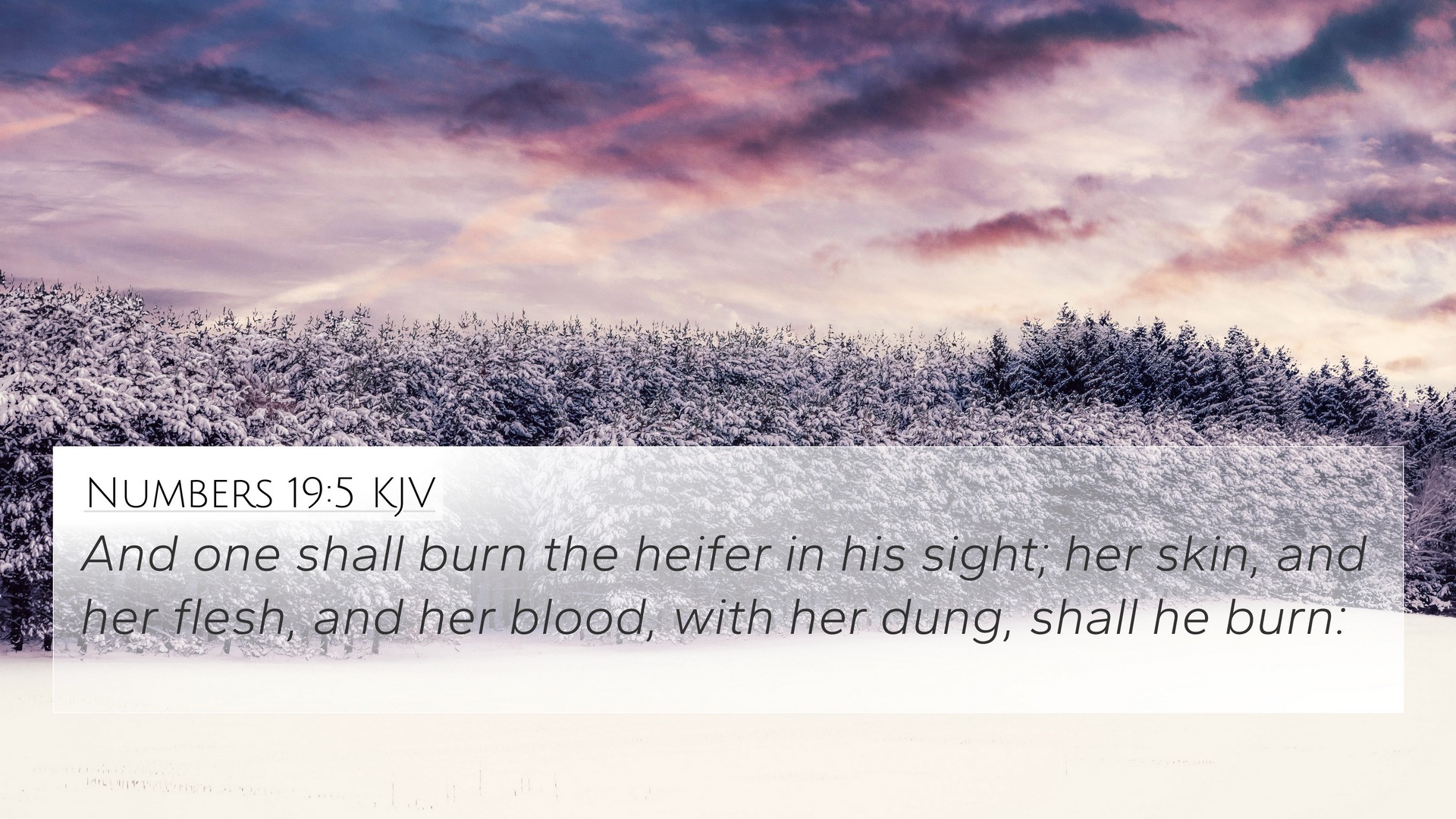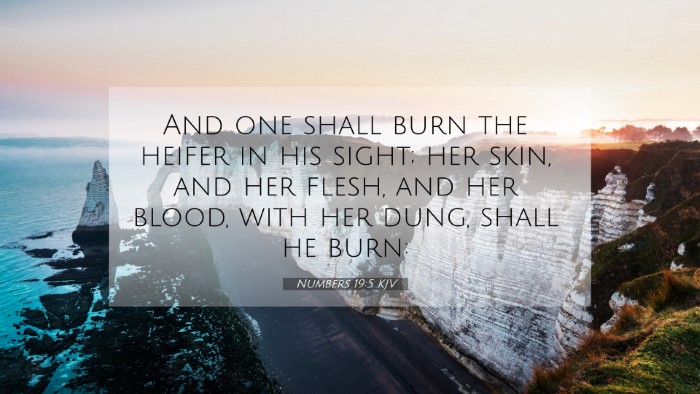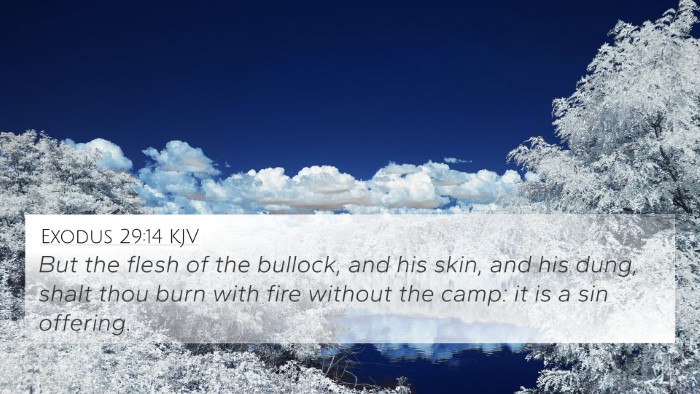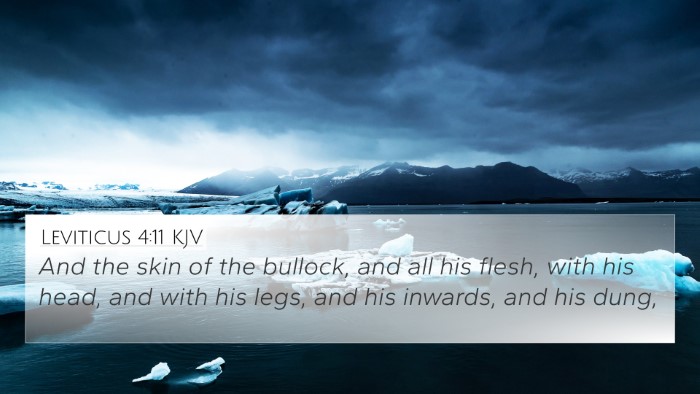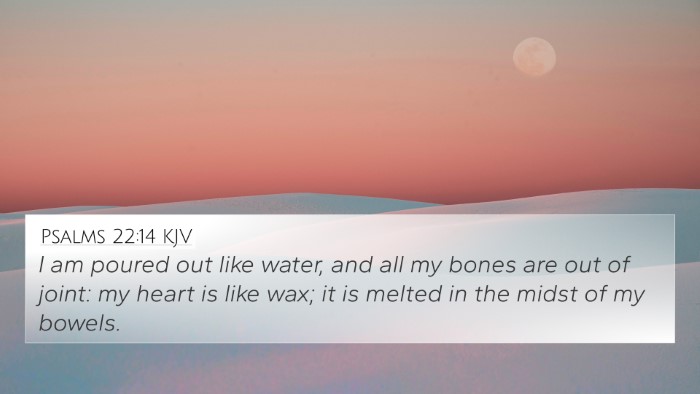Understanding Numbers 19:5
Bible Verse: Numbers 19:5 - "And one shall burn the heifer in his sight; her hide, and her flesh, and her blood, and her dung, shall he burn."
Summary of Meaning
The verse from Numbers 19:5 details a specific aspect of the ritual concerning the red heifer, which was used for purification purposes among the Israelites. The instructions are foundational to the understanding of the sacrificial system and symbolizes the seriousness of sin and the need for purification.
Insights from Commentaries
Matthew Henry's Commentary
Matthew Henry emphasizes the importance of the red heifer as a sacrificial offering that signifies atonement and cleansing from sin. He reflects on the meticulous instructions for the offering, noting that every part of the heifer was to be consumed in the fire, symbolizing complete dedication to God and the seriousness with which He takes sin.
Albert Barnes' Notes
Albert Barnes points out that the burning of the heifer takes place in the sight of the priest, highlighting the importance of ceremony in making the ritual visible and significant for the people. He notes the comprehensive nature of the offering, as it includes all parts of the animal, reiterating that nothing is left over which signifies total sacrifice.
Adam Clarke's Commentary
Adam Clarke elaborates on the symbolism of burning the heifer, stating that it represents the complete judgment of sin. He explains that the ashes produced from this ceremony would be used for purification rites, signifying how the sacrifice not only addresses sin but also provides a means for the sinner to be restored to a right relationship with God.
Cross-References with Related Bible Verses
- Hebrews 9:13-14 - Discusses the sacrificial system and how the blood of animals could purify the flesh, linking to the concept of cleansing.
- Leviticus 16:27 - This verse about Azazel illustrates the idea of taking away sin, which is reminiscent of the purification offered by the red heifer.
- 1 Peter 1:19 - References the precious blood of Christ, drawing a parallel to the sacrificial system exemplified by the heifer.
- John 1:29 - John the Baptist identifies Jesus as the Lamb of God, evoking themes of sacrifice that resonate with Numbers 19:5.
- Romans 6:23 - Highlights the wages of sin being death, which underscores the need for sacrifice and purification.
- Matthew 5:8 - "Blessed are the pure in heart" connects the idea of purity with the outcome of purification rituals.
- Isaiah 1:18 - Invites sinners to be cleansed, similar to the intent behind the heifer's sacrifice.
- Ezekiel 36:25 - God promises to cleanse Israel from all impurities, aligning with the red heifer’s symbolic role.
- 1 John 1:9 - Discusses confession and cleansing from all unrighteousness, resonating with the themes of Numbers 19:5.
- Galatians 3:13 - Discusses Christ redeeming from the curse of the law, connecting to the sacrificial concepts in Numbers.
Thematic Connections
The themes encapsulated in Numbers 19:5 reflect the overarching concepts of sacrifice, cleansing, and the need for atonement throughout the Bible. The necessity for ritualistic purity resonates in the teachings of both the Old and New Testaments, where various sacrificial systems eventually point to Christ's ultimate sacrifice.
Conclusion
Understanding Numbers 19:5 through the insights of biblical commentaries allows for a comprehensive view of its significance. The ritual acts illustrated by this verse serve as a prototype for the ultimate sacrifice achieved in Christ, and the connections made through various biblical verses illustrate a robust tapestry woven throughout scripture.
Further Study
For deeper understanding, consider exploring tools like a Bible concordance or cross-reference Bible study methods to identify further connections between these verses and the greater biblical narrative. Resources such as a Bible cross-reference guide can aid in examining the links between the Old and New Testament themes of sacrifice and cleansing, leading to enriching studies of scripture.
